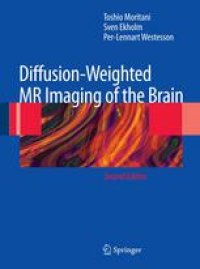
Ebook: Diffusion-Weighted MR Imaging of the Brain
- Tags: Neuroradiology, Diagnostic Radiology, Neurology, Neurosurgery
- Year: 2009
- Publisher: Springer-Verlag Berlin Heidelberg
- Edition: 2
- Language: English
- pdf
Few advances in MR imaging have had the impact degenerative neurologic disorders, white matter d- that dif usion-weighted (DW) imaging has had in the eases, toxic/metabolic disorders, and tumors. As one evaluation of brain. From the time of the early de- can easily see from the table of contents, the authors scriptions by LeBihan and colleagues of the ability have systematically covered all major areas of neu- to image and measure the micromovement of water radiology. T is will allow cross-referencing to pr- molecules in the brain to the present time, dif usion lematic cases which one may encounter. Additionally, imaging and its derivatives have made an impact in knowledge of what represents a normal adult brain the evaluation of multiple disease processes, primar- and a normal developing brain along with an exp- ily in ischemia, but also in other conditions of the nation of artifacts seen in DW imaging makes this a brain. In most medical centers dif usion imaging is valuable book. It is noteworthy that the authors have no longer considered a sequence to be used in spe- chosen to abundantly illustrate the clinical material, cial circumstances, but rather it is employed as part drawing on pathologic correlations in a number of of routine MR imaging of the brain. Because the in- areas.
This practical-minded text helps the radiologist and the clinician understand diffusion-weighted MR imaging. The book’s 15 chapters range from basic principles to interpretation of diffusion-weighted MR imaging and specific disease. In this second edition, diffusion tensor imaging (fractional anisotropy, color map and fiber tractography) is covered and a new chapter, on "Diffusion-Weighted Imaging of Scalp and Skull Lesions," is included. The volume is updated by newly added cases accompanied by radiological and pathological images along with the most recent references. It is aimed at all those who are involved in neuroimaging, including: residents, fellows, staff, as well as neurologists and neurosurgeons.
Diffusion-weighted MR imaging is widely accepted as a means to identify acute infarction but also to differentiate many other pathologic conditions. Understanding diffusion-weighted imaging is important for radiologists, neurologists, neurosurgeons as well as radiology technologists.